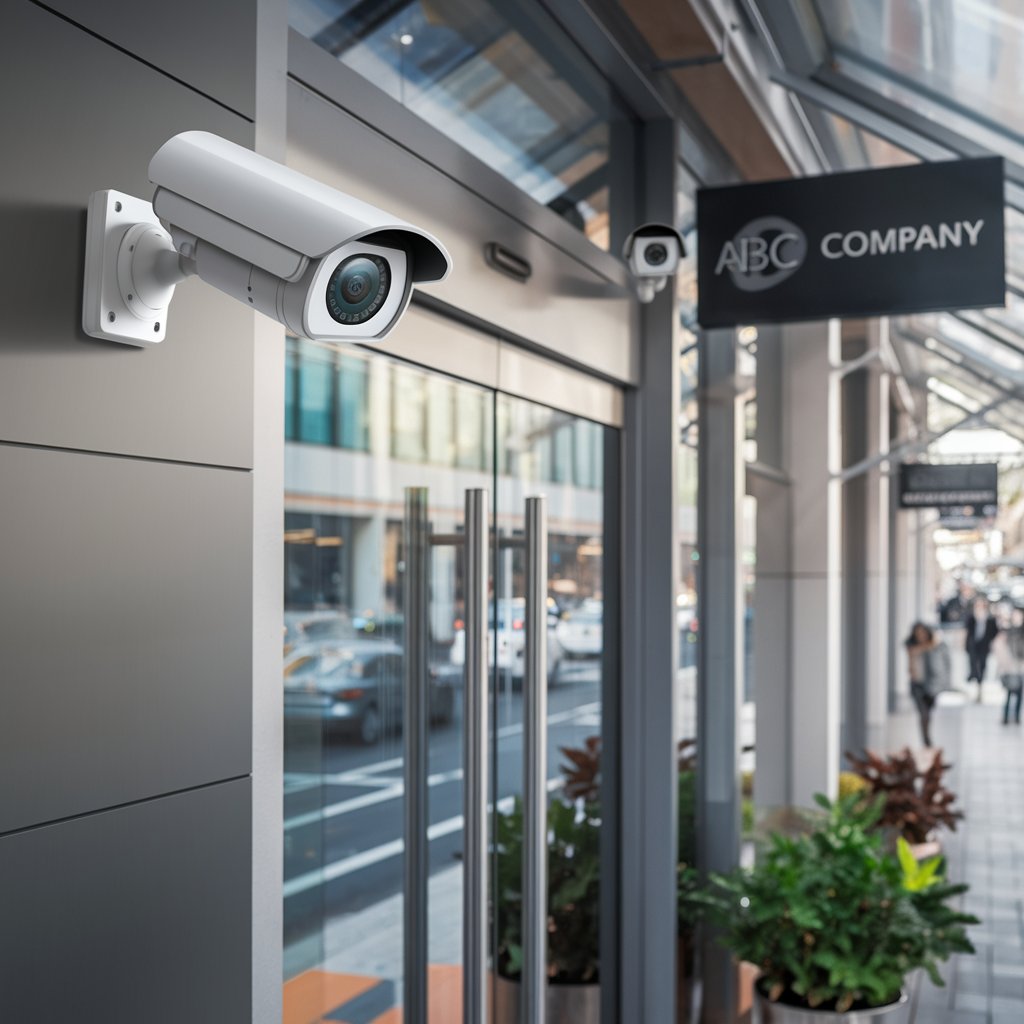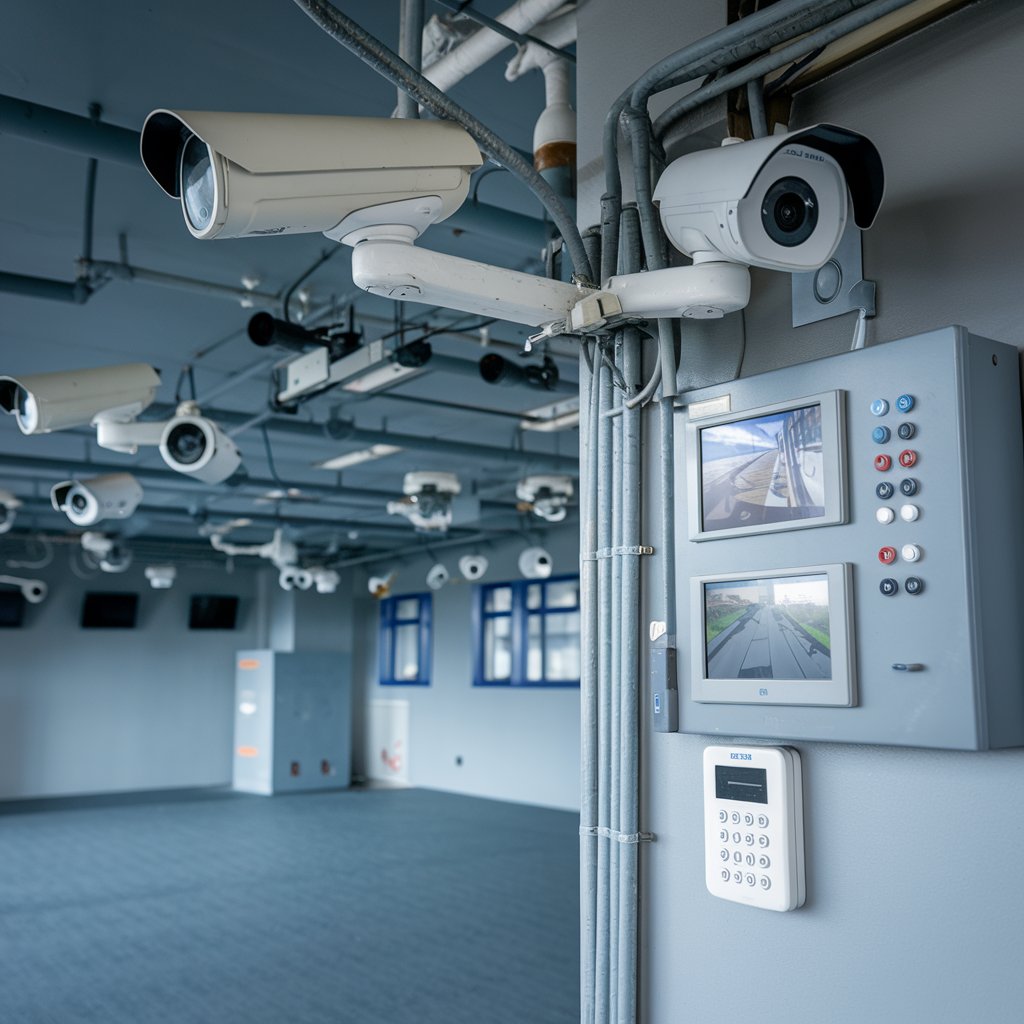The commercial security market in the U.S. is undergoing a transformation, driven by rapid advancements in technology. As businesses of all sizes face growing threats—from physical security breaches to cybersecurity risks—video surveillance and access control solutions have become indispensable tools for protecting assets, personnel, and data. The increasing sophistication of these security systems is making them smarter, more integrated, and more efficient.
The Growing Need for Enhanced Security in U.S. Commercial Spaces
In today’s fast-paced and interconnected world, the need for effective security solutions in commercial spaces has never been greater. According to industry reports, the global commercial security systems market is projected to grow substantially over the next decade, with the U.S. continuing to lead in demand for cutting-edge security technology. This growth is primarily fueled by the need for businesses to mitigate a wide range of risks, including unauthorized access, theft, vandalism, and cyber-attacks.
Additionally, growing concerns over workplace safety, along with the increasing value of sensitive data, have made video surveillance and access control solutions key pillars of modern business security. Commercial sectors, including retail, healthcare, hospitality, government, education, and corporate offices, are investing in advanced security measures to protect their properties and improve operational efficiency.

Innovations in Video Surveillance
One of the most significant innovations in the U.S. commercial security market is the evolution of video surveillance systems. Traditional analog CCTV cameras are being replaced by advanced digital surveillance solutions powered by artificial intelligence (AI), cloud computing, and Internet of Things (IoT) technologies.
1. AI-Powered Video Surveillance
AI and machine learning have revolutionized video surveillance by enabling smart cameras to perform more than just record footage. AI-powered surveillance systems can analyze live video feeds in real time, detecting suspicious activities, identifying individuals, and even predicting potential threats before they escalate. For example, facial recognition technology allows businesses to grant or restrict access based on pre-programmed profiles. Similarly, anomaly detection algorithms can trigger automatic alerts if an unusual movement or behavior is detected, significantly reducing human error and increasing the effectiveness of security teams.
2. Cloud-Based Video Storage and Management
Another game-changer in the commercial security space is the shift towards cloud-based video surveillance systems. Unlike traditional systems that rely on on-site storage, cloud-based systems store video footage securely on remote servers. This not only ensures data is safely backed up but also provides business owners and security teams with remote access to surveillance footage at any time, from anywhere.
Moreover, cloud-based systems can integrate seamlessly with other security technologies, such as access control systems and alarm systems, providing businesses with a unified security infrastructure. These systems are particularly beneficial for companies with multiple locations, as they allow for centralized monitoring and management.
3. High-Resolution Cameras and 4K Imaging
As businesses demand more detailed and clearer surveillance footage, high-resolution cameras are becoming increasingly common. 4K cameras, in particular, offer superior image quality, making it easier for security personnel to identify faces, license plates, and other important details. These cameras are especially useful in environments like parking lots, large retail spaces, and public areas, where capturing intricate details can be crucial for investigations.
Download PDF Brochure @
https://www.marketsandmarkets.com/pdfdownloadNew.asp?id=234307144

Advancements in Access Control Systems
Access control systems are equally important in safeguarding commercial properties, ensuring that only authorized individuals can enter certain areas. The U.S. market for access control solutions is seeing rapid growth, driven by the need for more secure, flexible, and convenient access management systems.
1. Biometric Access Control
One of the most innovative advancements in access control technology is the rise of biometric authentication. Biometric systems, including fingerprint, facial recognition, and iris scanning, are gaining popularity due to their accuracy and convenience. These systems ensure that only authorized personnel can access secure areas, eliminating the need for traditional keycards or PIN codes that can be lost or stolen.
Facial recognition technology, in particular, is seeing widespread adoption in high-security facilities, airports, and corporate offices. By leveraging advanced algorithms, biometric systems can verify identities in seconds, providing a higher level of security compared to traditional access methods.
2. Mobile Access Control
As mobile technology continues to evolve, mobile access control systems are gaining traction in the U.S. commercial security market. These systems enable employees, visitors, and contractors to use their smartphones as access credentials, eliminating the need for physical cards or fobs. Mobile access control is not only more convenient but also more secure, as it allows businesses to remotely issue, revoke, and track access permissions in real time.
3. Integrated Security Systems
Another trend in the access control market is the growing demand for integrated systems. Many commercial facilities are opting for access control solutions that integrate seamlessly with video surveillance, alarm systems, and visitor management systems. This integration provides a more holistic approach to security, allowing for centralized monitoring and improved coordination between various security components.
For example, if an access control system detects unauthorized entry, it can trigger the video surveillance system to start recording and alert security personnel, creating a real-time, automated response to potential threats.
Regulatory Compliance and Data Security
As video surveillance and access control systems become more advanced, ensuring that these systems comply with regulatory requirements, such as the General Data Protection Regulation (GDPR) in the EU or the Health Insurance Portability and Accountability Act (HIPAA) in the U.S., is crucial. Many businesses are investing in security systems that not only provide physical protection but also safeguard data privacy.
The U.S. has specific laws governing video surveillance and data collection, including state-level regulations and industry-specific requirements. For example, retail and financial institutions must ensure that their surveillance systems meet requirements for data retention, accessibility, and confidentiality. Businesses must ensure that their security solutions offer secure data storage and management, especially for sensitive footage captured by video surveillance systems.
The U.S. commercial security market is experiencing rapid growth, driven by innovations in video surveillance and access control technologies. As businesses continue to face evolving security challenges, the adoption of AI-powered video surveillance, biometric access control, and integrated security systems is becoming increasingly essential. With advancements in cloud-based solutions, high-resolution cameras, and mobile access control, U.S. businesses are investing in smarter, more effective security systems that offer enhanced protection while improving operational efficiency.
As security threats continue to evolve, these innovations will ensure that commercial spaces remain safe, secure, and equipped to handle the challenges of tomorrow’s security landscape.
The major players in the commercial security system companies include
- Johnson Controls (US),
- Carrier (US),
- Honeywell International Inc. (US),
- Halma plc (US)
- Teledyne FLIR LLC(US),
About MarketsandMarkets
MarketsandMarkets™ has been recognized as one of America’s Best Management Consulting Firms by Forbes, as per their recent report.
MarketsandMarkets™ is a blue ocean alternative in growth consulting and program management, leveraging a man-machine offering to drive supernormal growth for progressive organizations in the B2B space. With the widest lens on emerging technologies, we are proficient in co-creating supernormal growth for clients across the globe.
Today, 80% of Fortune 2000 companies rely on MarketsandMarkets, and 90 of the top 100 companies in each sector trust us to accelerate their revenue growth. With a global clientele of over 13,000 organizations, we help businesses thrive in a disruptive ecosystem.
The B2B economy is witnessing the emergence of $25 trillion in new revenue streams that are replacing existing ones within this decade. We work with clients on growth programs, helping them monetize this $25 trillion opportunity through our service lines – TAM Expansion, Go-to-Market (GTM) Strategy to Execution, Market Share Gain, Account Enablement, and Thought Leadership Marketing.
Built on the ‘GIVE Growth’ principle, we collaborate with several Forbes Global 2000 B2B companies to keep them future-ready. Our insights and strategies are powered by industry experts, cutting-edge AI, and our Market Intelligence Cloud, KnowledgeStore™, which integrates research and provides ecosystem-wide visibility into revenue shifts.
In addition, MarketsandMarkets SalesIQ enables sales teams to identify high-priority accounts and uncover hidden opportunities, helping them build more pipeline and win more deals with precision.
To find out more, visit www.MarketsandMarkets™.com or follow us on Twitter , LinkedIn and Facebook .
Contact:
Mr. Rohan Salgarkar
MarketsandMarkets™ INC.
1615 South Congress Ave.
Suite 103, Delray Beach, FL 33445
USA: +1-888-600-6441
Visit Our Website: https://www.marketsandmarkets.com/